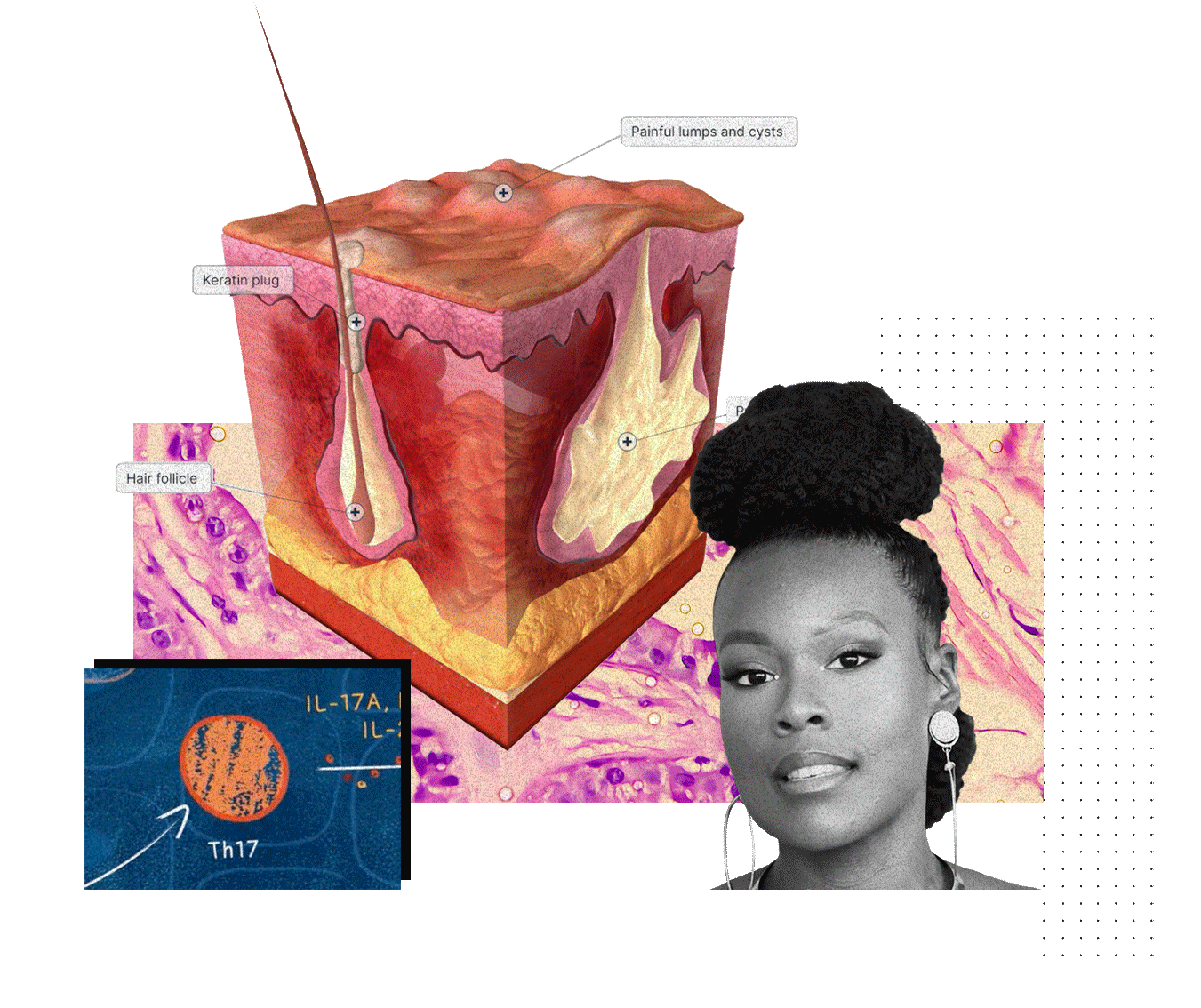
Hidradenitis Suppurativa
Hidradenitis suppurativa (HS) is a chronic disorder of the terminal follicular epithelium in the apocrine gland-bearing skin that causes disabling pain.2 Here, we provide insights into the pathophysiology of HS and our efforts to improve the lives of patients with HS.


